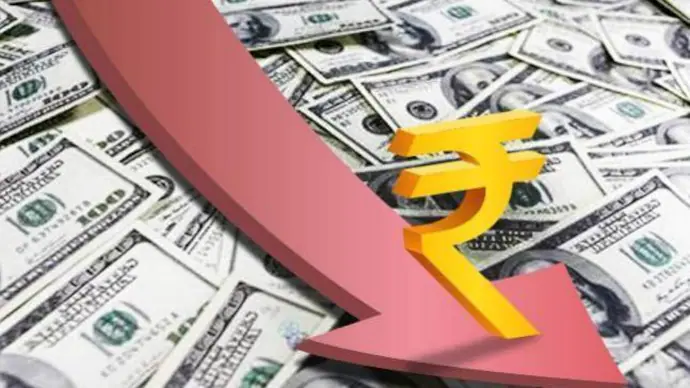The Indian rupee began the trading session on a stable note, opening flat at 82.35 against the US dollar. As the forex market witnessed limited volatility, the rupee held its ground in early trade. This article provides an overview of the factors influencing the rupee’s performance and the potential impact on the Indian economy.

Rupee Starts Falling Again Against the US Dollar
The rupee’s opening at 82.35 against the US dollar indicated a consolidation phase after recent fluctuations. The currency maintained its level due to a lack of significant market-moving triggers. While the domestic equity market showcased strength, the dollar’s performance on global cues and investor sentiment played a crucial role.
Global Market Factors:
The US dollar, which is considered a safe haven currency, has been influenced by various global factors. Geopolitical tensions, monetary policies of major central banks, trade tensions, and economic data releases from major economies can impact the dollar’s value. Traders and investors closely monitor these factors, as they ultimately influence the exchange rate of currencies like the rupee against the dollar.
Domestic Economic Outlook:
The Indian economy plays a pivotal role in determining the rupee’s strength. Factors such as inflation, fiscal deficit, interest rates, and foreign fund flows contribute to the overall sentiment surrounding the currency. Additionally, developments in the Indian stock market and the country’s trade balance with major economies have an impact on the exchange rate.
Monetary Policy and RBI Intervention:
The Reserve Bank of India (RBI), the country’s central bank, implements various measures to maintain stability in the currency markets. The RBI actively intervenes in the forex market to manage excessive volatility and maintain a balanced exchange rate. Its monetary policy decisions, such as interest rate changes and liquidity management, can significantly influence the rupee’s performance.
Global Trade Dynamics:
Given India’s position as a major player in global trade, developments in international commerce have an impact on the rupee’s exchange rate. Fluctuations in crude oil prices, since India is a significant importer, and the overall global sentiment towards emerging markets can influence the currency’s strength. Trade negotiations and geopolitical events also play a role in shaping the rupee’s performance.
Future Outlook:
While the rupee has opened steadily against the US dollar, the currency’s trajectory will depend on several factors in the coming weeks and months. Any significant changes in global economic conditions, geopolitical tensions, or domestic factors could result in fluctuations in the exchange rate. Traders, investors, and businesses should continue to monitor these factors closely to assess potential risks and opportunities.
Conclusion:
The Indian rupee commenced the trading session on a stable note, opening at 82.35 against the US dollar. As global market dynamics and domestic economic factors evolve, the rupee’s strength may witness fluctuations. Traders, investors, and policymakers should remain vigilant and adapt their strategies accordingly to navigate the currency markets effectively.
